-
收藏模板下载模板
- 模板信息
- 更新时间:2023-09-07
- 字数:约17597字
- 页数:约16页
- 格式:.doc
- 推荐版本:Office2016及以上版本
- 售价:5 金币 / 会员免费
您可能喜欢的文档
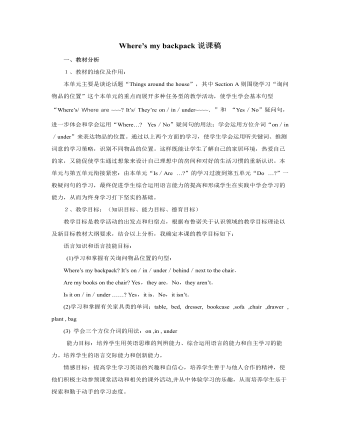
人教版新目标初中英语七年级上册Where’s my backpack说课稿
语言知识:Where is/are-----? Is it /Are they on/in/under-----? Yes, it is. / No, it isn’t.Yes, they are./ No, they aren’t.任务二:寻宝大行动活动目的:通过创设贴近生活的语言情景,学生自由选择所学的语言知识进行交流,培养学生综合运用语言的能力。活动过程:学生课前把自己最喜欢的一件东西收藏起来。以小组为单位,询问其他组员把宝物放在什么地方。规定时间内找到宝物最多者获胜。语言知识:Where is/are-----? Is it /Are they on/in/under-----? Yes, it is. / No, it isn’t.Yes, they are./ No, they aren’t.任务三:找差别活动目的:培养学生用英语思维的判辨能力,并对学生渗透德育教育:应该养成良好的生活习惯,保持房间干净整洁。活动过程:学生看两幅相似的图片,图片中有一些相同的物品,但所放的地点却不一样。以小组为单位,轮流询问有关物品所在的位置。学生记录下两幅图片中物品位置的不同,并在班上汇报自己小组得出的结果。
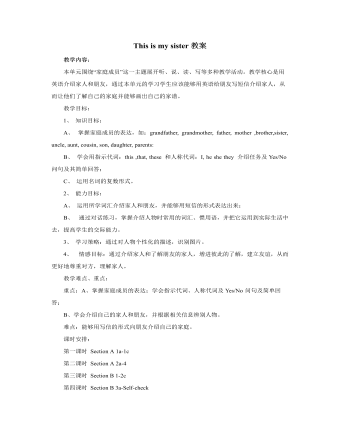
人教版新目标初中英语七年级上册This is my sister教案
(Play the recording twice again.) (Check the answer.) ③Pairwork. Draw your own picture and talk about it. T: We find out the picture of Lin Hai’s family. Can you draw a picture of your family? SS: … T: OK. When you finish drawing, tell your partner about your picture. You can use “This is …” and “ These are …” to talk about. Then report it to the class. (Students work.) (Check students’ work. Ask two or three students to report.) Step Three: Task. Talk about the family tree. T: Look at the family tree. I think it’s a big family. You can do it in groups of four or three. You can do it in pairs or only by yourself. Then report it to the class. (Students work. Teacher walks around in the classroom and helps the students.) T: Stop here. Let’s check it out. (Choose students to do it.) S1: Look at my family tree. This is my… This is my … They have two … This is my … This is my …This is my …This is my. My parents have two children. This is…This is my …My uncle and my aunt have a son. He is my … (Ask two more students to do it.) Homework. Write a passage about your family.
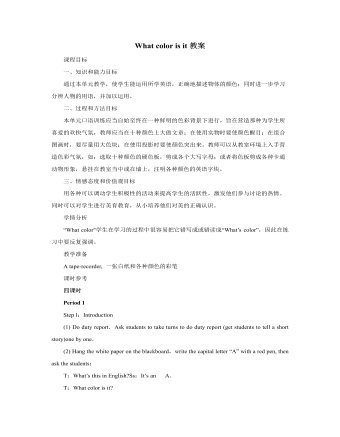
人教版新目标初中英语七年级上册What color is it教案
一、知识和能力目标通过本单元教学,使学生能运用所学英语,正确地描述物体的颜色;同时进一步学习分辨人物的用语,并加以运用。二、过程和方法目标本单元口语训练应当自始至终在一种鲜明的色彩背景下进行,旨在营造那种为学生所喜爱的欢快气氛,教师应当在十种颜色上大做文章;在使用实物时要使颜色醒目;在组合图画时,要尽量用大色块;在使用投影时要使颜色突出来。教师可以从教室环境上入手营造色彩气氛,如:选取十种颜色的硬色板,剪成各个大写字母;或者将色板剪成各种卡通动物形象,悬挂在教室当中或在墙上,注明各种颜色的英语字块。三、情感态度和价值观目标用各种可以调动学生积极性的活动来提高学生的活跃性,激发他们参与讨论的热情。同时可以对学生进行美育教育,从小培养他们对美的正确认识。
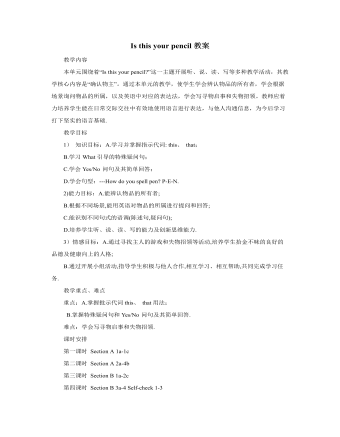
人教版新目标初中英语七年级上册Is this your pencil教案
T: Please look at the pictures and learn the new words.(用多媒体展示新单词效果较好。)1.at prep. 在(里面或附近);在(点刻);2.theart.表示特指的人、物、事或群体 3.lostadj.丢失的;遗失的4.Found adj. (find的过去式、过去分词)找回的5.lost and found 失物招领6.please adv.请7.school n. 学校8.a set of一套;一副(Teach students to read the words.)2. Practice the new words. (事先录制一段短的听力,让学生通过听的训练来强化所学的新单词,并为学习写寻物启示和失物招领作好准备。)T: Please listen to a short passage twice then fill the blanks using the words we learned.(Show students a short passage and play the recording for the students to listen.)There are many things in (1)_____________________in my (2)__________. Look, here’s (3)_________keys. Is this yours? (4)__________call Jim (5)___________753-2289.Typescript:There are many things in the Lost and Found in my school. Look, here’s a set of keys. Is this yours? Please call Jim at 753-2289.
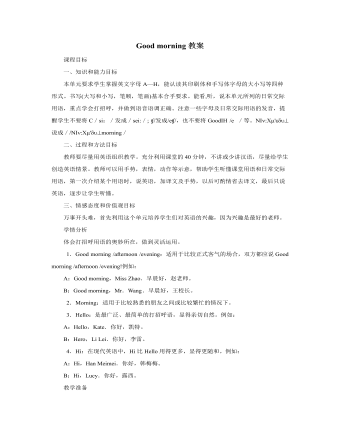
人教版新目标初中英语七年级上册Good morning教案
一、知识和能力目标本单元要求学生掌握英文字母A—H,能认读其印刷体和手写体字母的大小写等四种形式。书写(大写和小写,笔顺,笔画)基本合乎要求。能看,听,说本单元所列的日常交际用语,重点学会打招呼,并做到语音语调正确。注意一些字母及日常交际用语的发音,提醒学生不要将C/si:/发成/sei:/; ?/发成/e?/,也不要将Good?H /e /等。??????'????说成/???????'???morning/二、过程和方法目标教师要尽量用英语组织教学。充分利用课堂的40分钟,不讲或少讲汉语,尽量给学生创造英语情景。教师可以用手势,表情,动作等示意,帮助学生听懂课堂用语和日常交际用语,第一次介绍某个用语时,说英语,加译文及手势,以后可酌情省去译文,最后只说英语,逐步让学生听懂。
- 查看更多相关Word文档
Where’s my backpack教案
教学内容:
本单元主要内容是谈论物品的所在位置,通过这一话题,训练学生的听、说、读、写四项基本技能,让学生通过询问物品的位置,学习一些物品的单词,及方位介词 on , in , under ,behind 等的用法;学习并掌握where句型的运用,使学生养成干净、整洁、合理摆放物品的好习惯。

教学目标:
1、知识目标:
A、学会一些表示家具的名词以及学习用品的单词;
B、方位介词,如:in , on , under ,behind的用法;
C、学会运用方位介词和where句型表述物品所在的位置。
2、能力目标:
A、学会正确描述物品作在的位置;
B、学会询问自己或他人物品的具体位置;
C、能够合理地描述和设计房间。
3、情感目标:培养学生整齐地摆放自己物品的生活习惯。
教学难点、重点:
重点:A、方位介词 in , on , under , behind的用法。
B、Where的特殊疑问句和Is this a/an . . . ?一般疑问句的肯定和否定回答。
C、学习名词 bed , dresser ,bookcase ,backpack . . .
难点:A、能够正确运用方位介词描述物品作在的位置;
B、能够运用Where的问句找到物品位置。
课时安排:
第一课时 Section A 1a-1c
第二课时 Section A 2a-4
第三课时 Section B 1-2b
第四课时 Section B 3a-4 Self-check
Period One
教师:准备一个带有家具的房间的多媒体课件或挂图,搜集图片、卡片、一些学习用品的实物,以及闹钟、光盘、数学书和其他日常用品。
学生:彩笔
学生用品、大白纸、课本所涉及的单词的实物。
教学步骤
Step One: Present the New words.
①Warming up.
(Prepare some school things for the studentsas presents .)
T: What’s this ? (There is apencil in the teacher’s hand .)
S1: Yes you a right . Here you are .
(give it to the student as a present .)
T: Is this a ruler ? (hold up a ruler .)
S2: Yes it is.
T: How to spell ruler ?
S2: R-U-L-E-R , ruler .
T: Good , here you are.
(Hold up a pen , an eraser , a notebook andso on . Ask the questions in the same way . And give the presents to thestudents .)
T: What’s this ?
S3: It’s a backpack .
T: I have a backpack for you as a present,(Looking for it in the desk , under the chair . . . ) but I can’t find it . Where’s it ? Do you know ?
S3: I don’t know .
S4: I think it’s in your desk..
T: (Look into the desk.) No ,it isn’t .Now , let’s look for thebackpack together , OK ? (Write down the title on the blackboard .)
②Learn the New words.
T: Look at the big picture on the screen.This is a big nice room .I want to own such a room . Because there is somenice furniture in it . Do you know the names of the furniture ?
(Show a picture of a bed and a dresser .)
T: What’s this ? It’s a bed . “BED” . Read after me.B-E-D , bed.
Ss: B-E-D , bed.
T: What’s this ? It’s a dresser .D-R-E-S-S-R , dresser.
Ss: D-R-E-S-S-R , dresser.
(Teach the other words bookcase/sofa/chair/drawer/plant/ . . . in the same way .)
通过师生互动,激发学生思维,并用学过的句子导入新课。
利用多媒体课件创设情景,直观地呈现单词,使学生在语境中理解单词。
T: Read the words aloud .
③Present the words in , on , under , behind using the objects .
T: Where is my book ? It’s on the desk . (Puta book on the desk .)
T: Where is my bag ? (Put a bag on the deskand ask this question .)
S1: It’s on the desk .
T: Where is my bag ? (To all the students)
Ss: It’s on the desk .
T: Where is my pen ? It’s in the pencil case. (Put a pen in the pencil case and ask .)
T: Where is my ruler ? (Put a ruler in thepencil case , too .)
S1: It’s in the pencil case, too .
T: Where is the ruler ?
Ss: It’s in the pencil case.
(Then learn the other two prepositions “under”, “behind” in the same way . )
④Present the words .
T: Now , please look at the screen , whereis the ball in Picture 1 ?
S1: I think it’s in the box .
T: Where is the ball in Picture 2 ?
S2: It’s on the box .
T: Where is the ball in Picture 3 ?
S3: It’s behind the box .
T: Where is the ball in Picture 4 ?
S4: It’s under the box .
T: There are some pictures on the screen ,please match the sentences and the pictures .
1: The cat is under the chair .
2: The cat is on the bed .
3: The cat is behind the door .
4: The cat is in the box .
5: The cat is next to the plant .
通过实物所在的位置直观地呈现乏味介词。
利用多媒体课件创设语言情景,准确呈现物品之间的位置关系,让学生在真实的情景中理解和掌握方位介词。
让学生把句子和图画匹配起来,巩固方位介词的用法。
6: The cat is onthe chair .
T:Please open yourbooks and do 1a quickly as you can.
(After doing 1a,check the answer.)
Step Two :drills .
①Practice the drills .
T: This time , use the school things aroundyou to practice the conversation .
T:Where’s the watch? (Holdup a watch in the hand.)
S1: It’s in your hand.
T: Where’s the bag? (Put abag on the chair.)
S2: It’s on the chair.
(Ask the students topractice the dialogue like this. Then get some pairs to act it out.)
②Introduce a room and listen to the tape.
T: This is Tommy’s room, but he can’t find his books,his pencil case, his baseball, his computer game and his keys, please help himfind the things. Listen and number [1-5] the things in the picture.
(Play the recording and then check theanswer.)
Step Three: Play a game.
T: Now, we will play a game , I have a newruler, all the students close your eyes, and I hide it in our classroom. Pleaseguess, Where is it ? If your answer is right, it is yours. Please ask like thisIs it on the desk? Is it on the floor? Are you ready?
S1: Is it in the ...?
T: No,it isn’t.
S2: Is it under the…?
T: No, it isn’t.
S3: Is it behind the…?
T: Yes, it is. Please find it out .Here youare.(Give the ruler to him.)
(Ask three or four students to come to thefront to hide three or four new school things, others look for them.)
T:Who can come here to hide my new pen?
Ss: I can.
(After playing the game, some students whocan find the school things will have them.)
Step Four: Task.
T: Look at the picture on the screen. Thisis Mary’s room. In groups of four , describe where the things are in theroom.(Prepare
让学生用身边的学习用品操练句型,达到熟练运用where提问。
用学过的一般疑问句以游戏的方式操练本节课所学内容以增强趣味性。
利用屏幕上所给图片,描述Mary房间物品的位置,强化句型。
Forfive minutes.)
S1: Is the book on the desk?
S2: Yes, it is. Is the backpack under thechair?
S3: No, it isn’t. It’s… Where are the keys?
S4: They are…
Homework: Make a play.
There is a man. His name is “forgetful”. He always forgetssomethings, and he always asks Where is / are my …?
Please make a short play and next class wewill act it out.
PeriodTwo
课前准备
教师:准备表格、一些学习用品和多媒体教学课件。
学生:表演短剧的道具、表格。
教学设计
Step One: Check the homework.(运用所学句型表演短剧。)
(The students practice the short play “forgetful” for three minutesso that they can act it out well.)
T:Which group can act the play out?
Ss:We can.(Come to the front.)
S1:My name is “forgetful”, I want to work ,but ,but … Where are my …?
S2: (Come to him ) Are they on the…?
S1: No, it isn’t.
S3: Are they in your…?
S1: Oh, yes, it is. But where is my IDcard?...
(Some groups act it out.)
Step Tw Review the words.(利用多媒体教学课件复习学过的单词,为下面的听力训练做铺垫。)
1. Ask the students to spell the words inthe picture in 2a.
T: First, look at the pictures on thescreen. What are these ?
S1: They are books.
T:What’s this?
S2: It’s a baseball.
T:What’s this?
S3: It’s a computer game.
T:Is this a backpack?
S4:Yes,it is.
T: Can you spell it?
S4: Yes, B-A-C-K-P-A-C-K,backpack.
(Review the other words in the same way.)
T:Now, listen to the recording and look at2a. Number the things from 1-6.
T:Check the answer.(Students give theanswer.)
T:Now, listen again. Let’s do 2b. Find outWhere are the things from 2a? Number the things in the pictures [1-6].(通过听力训练检测学生对所学知识掌握的情况,培养学生听的能力。)
(Play the tape again and check the answer.)
T:Who can answer?
S1:The computer game is on the backpack.
S2:The books are …
S3:The pencil case is …
S4: The backpack is…
S5: The baseball is…
S6: The keys are …
Step Three: Practice the drills.(根据听力材料中的句型,利用图片再次进行巩固练习。)
T: Look at the picture. Is the baseball onthe chair?
Ss:No, it isn’t. It’s under the chair.
T: Are the books under the table.
S:No,they aren’t. They’re on the chair.
…
(write the four sentences on the blackboard.Let the students ask and answer using their own thigns.)
S1: Is your ruler on your pencil case?
S2: No, it isn’t. It’s in my…
S3: Are your keys in your pocket?
S4:No, they aren’t. They are in my…
(Let them ask and answer in pairs as many asthey can to improve their oral ability.)
Step Four: Present the grammar and practice.(利用实物呈现语法。)
1.Grammar focus.
(The teacher collects some school things onher desk, them hides them to ask some questions.)
T:Where is the baseball? (Put a baseball inthe desk)
S: It’s in …
T: Where is the dictionary?
Ss: It’s on/ under/ behind…
T: Whereare the books/ your keys?
S:They’re on the chair./ inyour pocket…
(Then the teacher writes the sentences onthe blackboard.)
T: Please pay attention to the sentences. Weuse “It’s” to talk about single objects and “They’re” to talk about twoor more objects.
“Where’s, It’s and They’re” are contractions.
Make a survey.(运用调查表来巩固句型。)
T: Make a survey about your classmates’ things using Whereis/are…? And then fill in the chart.
NameThings | Ruler | Pencil case | Dictionary | Keys |
Lucy |
|
|
|
|
Tom |
|
|
|
|
Tommy |
|
|
|
|
Lily |
|
|
|
|
2.Make a conversation.(看图操练句型。)
T: Who can put these sentences in order tomake a conversation in 3a.
S1:We can.Where’s the bag?
S2: I don’t know.Is it on thedresser?
S1: No, it isn’t.
T:Prepare a new dialogue for three minutesjust like this. You can use your own things.
(Later, ask more pairs to practice theirconversations as quickly as they can.)
Step Five: Practice the drill “Where is / are…?”
(Make a conversation with a student.)
T:Look at the picture in 3c. Where are thebooks?
S1: I don’t know.
T: Where are the keys?
S2: They are on the dresser.
T: Work in pairs. Make a similarconversation like this.
S1:Where is the baseball?
S2: It’s…
S3:Where is the…?
S4: I don’t know.
S5: Where are the…?
S6: …
S7: Where is the pencil case?
S8: It’s…
(Let the students ask and answer accordingto the picture in 3c or using their own things.)
Step Six: Task.(设置任务,通过对比的方式让学生理解方位介词。)
T:Student A looks at Picture 1 (TextbookP21,4) student B looks at Picture2 (Textbook P19,1a)Ask and answer in pairs.
Sample:
1.Sa: Where is the backpack? Is it under thetable?
Sb: No, it isn’t. It’s on the table.
2.Sa: Where are the books? Are they on thesofa?
Sb: No, they aren’t. They are on thebed.
…...
T: Let’s find out thedifferences between the pictures.Where is the backpack? Is it on the table?(Look at Picture 1)
Ss: No, it isn’t. It’s under the table. (Lookat Picture 2)
T: Where are the books?Are they behind thesofa? (Look at Picture1)
Ss: No, they are on the sofa. (Look atPicture 2)
(Ask some pairs to make the dialogue andfind out some differences.)
T:Fill in the chart according to thepictures.(利用表格直观体现出两幅图的不同点。)
Things | Picture1 | Pictuer2 |
Pencil case | in the backpack | on the table |
Books |
|
|
Backpack |
|
|
… |
|
|
T:Who wants to report it?
S1: I want to . In Picture 1, the pencilcase is… In Picture2, the pencil case is…
S2: In Picture 1, the books are… In Picture2, thebooks are…
(Ask other students to report it.)
Homework.
T: Make a survey after class. Ask some ofyour classmates “Where is…? Where are…?” Fill in the chart.
NameThings | Bed | Clock | Computer game | Ball |
Jim |
|
|
|
|
Amy |
|
|
|
|
PeriodThree
课前准备
教师:搜集学习用品、日常用品的图片及单词卡片。
学生:准备学习用品、日常用品。
教学设计
Step One:Present the new words.
T: I have some things on my desk, I thinkyou can tell me how to say them.
T: What’s this? (Hold up abook in the hand)
Ss: It’s a book.
T: Yes, it’s a math book. Readafter me. M-A-T-H-B-O-O-K, math book.
Ss: M-A-T-H-B-O-O-K, math book.
T: Do you have a watch?
Ss: Yes, I do./ No, I don’t.
T: Is it a watch?
Ss: No, it isn’t. It’s a clock.
T: Good. It’s an alarm clock.Read after me. A-L-A-R-M-C-L-O-C-K,alarm clock.
(Then hold up CD, video tape, hat, notebook,teach them in the same way. Check the words using the cards.)
T: Let’s do 1a in SectionB. Match the words with the things in the picture in 1a.(Then check theanswers.)
Step Tw Present the drills.
1.Review the words.
T: Now do 1b in Section B, look at Tommy’s room for threeminutes. Please try your best to remember all the things in the room. Begin!
(Three minutes later,ask them to close theirbooks. Give them another three minutes to write down the things theyremembered.)
T:Who can write them down on the blackboard?
S1:I can.(After writing them,students openthe books to check the answer.)
T:How many words did you write?
Ss:Fifteen/Twenty/Twenty-two …
T:What are in the picture?
S:A backpack, a quilt, a computer game, somebooks…
2.Present the drill.
T: Look at the picture 1a in Section B andanswer my questions Where is the math book?
S1: It is…
T: Where are the pictures?
S2: They are…
T: Where are the books?
S3: They are…
T: Ask and answer according to the picturethen fill in the chart.
Things | backpack | books | ID card | ruler | cap |
Places |
|
|
|
|
|
Step Three: Listen and practice the drill.
1.Listen to the tape.
T: Tommy wants his mother to bring someschool things to school for him. But his room isn’t tidy. So hismother can’t find the things. Let’s listen to therecording of 2a and help his mother find the things.
(Play the tape for the first time. Thestudents circle the word they hear. Then check the answer.)
T:Now listen again, and fill in the chart.
Things | ruler | notebook | Math book | CDs |
Places |
|
|
|
|
2.Practice the dialogue.
T: Where’s the ruler?
S1: It’s…
T: Where’s the notebook?
S2: It’s…
T: Where are CDs?
S3: They’re…
T: Work inpairs according tothe chart.
Step Four: Task.
T: Please look at Tommy’s room. Do you thinkit’s tidy?
Ss: No, I don’t think so.
T: Four students in a group. Draw a pictureabout Tommy’s room, help him clean the room to put the things in the correctplaces.
转载请注明出处!本文地址:
https://www.lfppt.com/worddetails_18943515.html最新课件教案文档
-

精选高中生期末评语
1、该生学习态度端正 ,能够积极配合老师 ,善于调动课堂气氛。 能够积极完成老师布置的任务。学习劲头足,听课又专注 ,做事更认 真 ,你是同学们学习的榜样。但是,成绩只代表昨天,并不能说明你 明天就一定也很优秀。所以,每个人都应该把成绩当作自己腾飞的起 点。2、 你不爱说话 ,但勤奋好学,诚实可爱;你做事踏实、认真、为 人忠厚 ,是一个品行端正、有上进心、有良好的道德修养的好学生。在学习上,积极、主动,能按时完成老师布置的作业,经过努力 ,各 科成绩都有明显进步,你有较强的思维能力和学习领悟力,学习也有 计划性,但在老师看来,你的潜力还没有完全发挥出来,学习上还要有持久的恒心和顽强的毅力。

公司2024第一季度意识形态工作联席会议总结
一是要把好正确导向。严格落实主体责任,逐条逐项细化任务,层层传导压力。要抓实思想引领,把理论学习贯穿始终,全身心投入主题教育当中;把理论学习、调查研究、推动发展、检视整改等有机融合、一体推进;坚持学思用贯通、知信行统一,努力在以学铸魂、以学增智、以学正风、以学促干方面取得实实在在的成效。更加深刻领会到******主义思想的科学体系、核心要义、实践要求,进一步坚定了理想信念,锤炼了政治品格,增强了工作本领,要自觉运用的创新理论研究新情况、解决新问题,为西北矿业高质量发展作出贡献。二是要加强应急处事能力。认真组织开展好各类理论宣讲和文化活动,发挥好基层ys*t阵地作用,加强分析预警和应对处置能力,提高发现力、研判力、处置力,起到稳定和引导作用。要坚决唱响主旋律,为“打造陕甘片区高质量发展标杆矿井”、建设“七个一流”能源集团和“精优智特”新淄矿营造良好的舆论氛围。三是加强舆情的搜集及应对。加强职工群众热点问题的舆论引导,做好舆情的收集、分析和研判,把握时、度、效,重视网上和网下舆情应对。
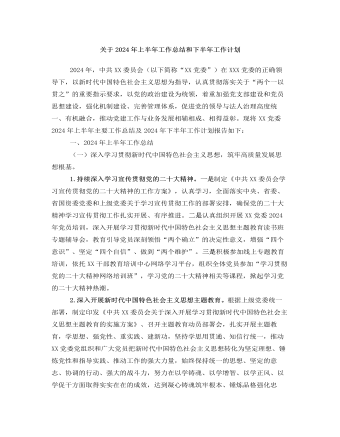
关于2024年上半年工作总结和下半年工作计划
二是深耕意识形态。加强意识形态、网络舆论阵地建设和管理,把握重大时间节点,科学分析研判意识形态领域情况,旗帜鲜明反对和抵制各种错误观点,有效防范处置风险隐患。积极响应和高效落实上级党委的决策部署,确保执行不偏向、不变通、不走样。(二)全面深化党的组织建设,锻造坚强有力的基层党组织。一是提高基层党组织建设力量。压实党建责任,从政治高度检视分析党建工作短板弱项,有针对性提出改进工作的思路和办法。持续优化党建考核评价体系。二是纵深推进基层党建,打造坚强战斗堡垒。创新实施党建工作模式,继续打造党建品牌,抓实“五强五化”党组织创建,广泛开展党员教育学习活动,以实际行动推动党建工作和经营发展目标同向、部署同步、工作同力。三是加强高素质专业化党员队伍管理。配齐配强支部党务工作者,把党务工作岗位作为培养锻炼干部的重要平台。
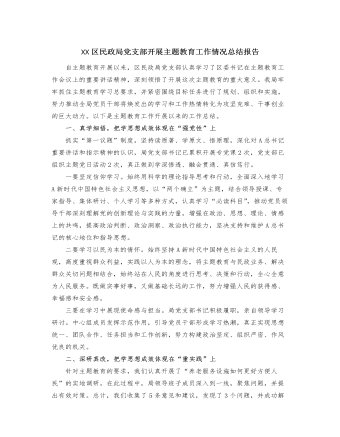
XX区民政局党支部开展主题教育工作情况总结报告
二要专注于解决问题。根据市委促进经济转型的总要求,聚焦“四个经济”和“双中心”的建设,深入了解基层科技工作、学术交流、组织建设等方面的实际情况,全面了解群众的真实需求,解决相关问题,并针对科技工作中存在的问题,采取实际措施,推动问题的实际解决。三要专注于急难愁盼问题。优化“民声热线”,推动解决一系列基层民生问题,努力将“民声热线”打造成主题教育的关键工具和展示平台。目前,“民声热线”已回应了群众的8个政策问题,并成功解决其中7个问题,真正使人民群众感受到了实质性的变化和效果。接下来,我局将继续深入学习主题教育的精神,借鉴其他单位的优秀经验和方法,以更高的要求、更严格的纪律、更实际的措施和更好的成果,不断深化主题教育的实施,展现新的风貌和活力。
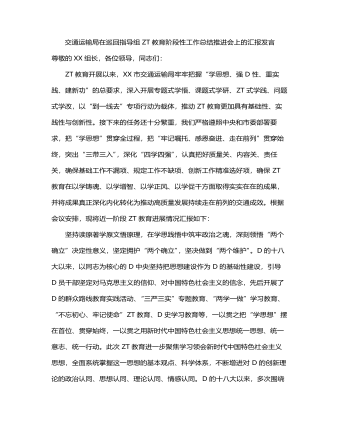
交通运输局在巡回指导组主题教育阶段性工作总结推进会上的汇报发言
今年3月,市政府出台《关于加快打造更具特色的“水运XX”的意见》,提出到2025年,“苏南运河全线达到准二级,实现2000吨级舶全天候畅行”。作为“水运XX”建设首战,谏壁闸一线闸扩容工程开工在即,但项目开工前还有许多实际问题亟需解决。结合“到一线去”专项行动,我们深入到谏壁闸一线,详细了解工程前期进展,实地察看谏壁闸周边环境和舶通航情况,不断完善施工设计方案。牢牢把握高质量发展这个首要任务,在学思践悟中开创建功之业,坚定扛起“走在前、挑大梁、多做贡献”的交通责任,奋力推动交通运输高质量发展持续走在前列。以学促干建新功,关键在推动高质量发展持续走在前列。新时代中国特色社会主义思想着重强调立足新发展阶段、贯彻新发展理念、构建新发展格局,推动高质量发展,提出了新发展阶段我国经济高质量发展要坚持的主线、重大战略目标、工作总基调和方法论等,深刻体现了这一思想的重要实践价值。
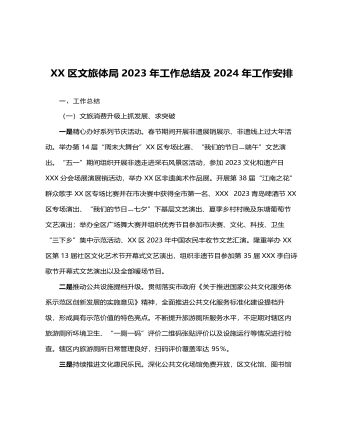
XX区文旅体局2023年工作总结 及2024年工作安排
三、2024年工作计划一是完善基层公共文化服务管理标准化模式,持续在公共文化服务精准化上探索创新,围绕群众需求,不断调整公共文化服务内容和形式,提升群众满意度。推进乡镇(街道)“114861”工程和农村文化“121616”工程,加大已开展活动的上传力度,确保年度目标任务按时保质保量完成。服务“双减”政策,持续做好校外培训机构审批工作,结合我区工作实际和文旅资源优势,进一步丰富我市义务教育阶段学生“双减”后的课外文化生活,推动“双减”政策走深走实。二是结合文旅产业融合发展示范区,全力推进全域旅游示范区创建,严格按照《国家全域旅游示范区验收标准》要求,极推动旅游产品全域布局、旅游要素全域配置、旅游设施全域优化、旅游产业全域覆盖。
今日更新Word
-

精选高中生期末评语
1、该生学习态度端正 ,能够积极配合老师 ,善于调动课堂气氛。 能够积极完成老师布置的任务。学习劲头足,听课又专注 ,做事更认 真 ,你是同学们学习的榜样。但是,成绩只代表昨天,并不能说明你 明天就一定也很优秀。所以,每个人都应该把成绩当作自己腾飞的起 点。2、 你不爱说话 ,但勤奋好学,诚实可爱;你做事踏实、认真、为 人忠厚 ,是一个品行端正、有上进心、有良好的道德修养的好学生。在学习上,积极、主动,能按时完成老师布置的作业,经过努力 ,各 科成绩都有明显进步,你有较强的思维能力和学习领悟力,学习也有 计划性,但在老师看来,你的潜力还没有完全发挥出来,学习上还要有持久的恒心和顽强的毅力。
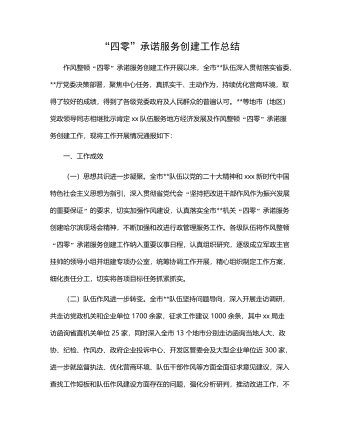
“四零”承诺服务创建工作总结
(二)坚持问题导向,持续改进工作。要继续在提高工作效率和服务质量上下功夫,积极学习借鉴其他部门及xx关于“四零”承诺服务创建工作的先进经验,同时主动查找并着力解决困扰企业和群众办事创业的难点问题。要进一步探索创新,继续优化工作流程,精简审批程序,缩短办事路径,压缩办理时限,深化政务公开,努力为企业当好“保姆”,为群众提供便利,不断适应新时代人民群众对政务服务的新需求。(三)深化内外宣传,树立良好形象。要深入挖掘并及时总结作风整顿“四零”承诺服务创建工作中形成的典型经验做法,进一步强化内部宣传与工作交流,推动全市创建工作质效整体提升。要面向社会和公众庄严承诺并积极践诺,主动接受监督,同时要依托电台、电视台、报纸及微信、微博等各类媒体大力宣传xx队伍作风整顿“四零”承诺服务创建工作成果,不断扩大社会知情面和群众知晓率。

2024年度工作计划汇编(18篇)
1.市政基础设施项目5项,总建设里程2.13km,投资概算2.28亿元。其中,烔炀大道(涉铁)工程施工单位已进场,项目部基本建成,正在办理临时用地、用电及用水等相关工作;中铁佰和佰乐(巢湖)二期10KV外线工程已签订施工合同;黄麓镇健康路、纬四路新建工程均已完成清单初稿编制,亟需黄麓镇完成图审工作和健康路新建工程的前期证件办理;公安学院配套道路项目在黄麓镇完成围墙建设后即可进场施工。2.公益性建设项目6项,总建筑面积15.62万㎡,投资概算10.41亿元。其中,居巢区职业教育中心新建工程、巢湖市世纪新都小学扩建工程已完成施工、监理招标挂网,2月上旬完成全部招标工作;合肥职业技术学院大维修三期已完成招标工作,近期签订施工合同后组织进场施工;半汤疗养院净化和医用气体工程已完成招标工作;半汤疗养院智能化工程因投诉暂时中止;巢湖市中医院(中西医结合医院)新建工程正在按照既定计划推进,预计4月中下旬挂网招标。

驻村工作队2024年第一季度工作总结汇编(4篇)
三是做大做强海产品自主品牌。工作队于xx年指导成立的冬松村海产品合作社,通过与消费帮扶平台合作,在工作队各派出单位、社会团体、个人支持下,已获得逾xx万元销售额。2022年底工作队推动合作社海产品加工点扩建的工作方案已获批,待资金下拨后将正式启动扩建工作。四是积极助企纾困,带动群众增收致富。工作队利用去年建立的xx镇产业发展工作群,收集本地企业在产品销售、技术、人力、资金、运营、用地等方面的需求,并加大xx支持乡村振兴力度,xx助理赴各村委开展多场xx政策支持乡村振兴宣讲活动,本季度有x万元助农贷款获批,xx万贷款正在审批中。在壮大既有产业的同时,完善联农带农机制,一方面鼓励企业雇用本地农户就业,另一方面计划与本地农户签订长期收购合同,让农民种得放心、种得安心,带动当地群众共同致富。

主题教育总结常用提纲大全
第一,主题教育是一次思想作风的深刻洗礼,初心传统进一步得到回归。第二,主题教育是一次沉疴积弊的集中清扫,突出问题进一步得到整治。第三,主题教育是一次强化为民服务的生动实践,赤子之情进一步得到提振。第四,主题教育是一次激发创业担当的有利契机,发展层次进一步得到提升。2.第一,必须提领思想、武装思想。第二,必须聚焦问题、由表及里。第三,必须领导带头、以上率下。第四,必须务实求实、认真较真。3.一是抬高政治站位,坚持大事大抓。二是坚持思想领先,狠抓学习教育。三是突出问题导向,深入整改纠治。四是坚持领导带头,发挥表率作用。4.一是立足“早”字抓筹划。二是着眼“活”字抓学习。三是围绕“统”字抓协调。5.一是形势所需。二是任务所系。三是职责所在。四是制度所定。6.一要提升认识。二要积极作为。三要密切协作。
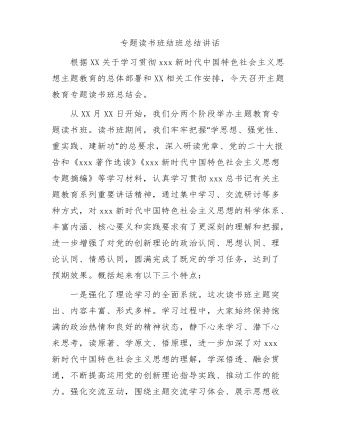
主题教育专题读书班结班总结讲话
第二,要把调查研究贯穿始终,实干担当促进发展。开展好“察实情、出实招”“破难题、促发展”“办实事、解民忧”专项行动,以强化理论学习指导发展实践,以深化调查研究推动解决发展难题。领导班子成员要每人牵头XX个课题开展调查研究,XX月底前召开调研成果交流会,集思广益研究对策措施。各部门、各单位要制定调研计划,通过座谈访谈、问卷调查、统计分析等方式开展调查研究,解决工作实际问题,帮助基层单位和客户解决实际困难。第三,要把检视问题贯穿始终,廉洁奉公树立新风。认真落实公司主题教育整改整治工作方案要求,坚持边学习、边对照、边检视、边整改,对标对表xxx新时代中国特色社会主义思想,深入查摆不足,系统梳理调查研究发现的问题、推动发展遇到的问题、群众反映强烈的问题,结合巡视巡察、审计和内外部监督检查发现的问题,形成问题清单。










